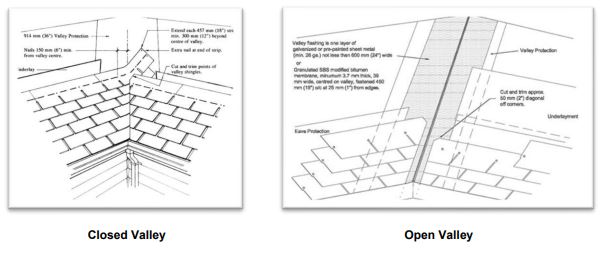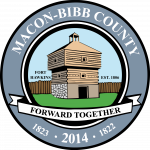Residential Roofing
The following are common questions asked by homeowners and contractors regarding the roofing of new dwellings and the reroofing of existing dwellings. The response to these questions is based on the 2018 International Residential Code(2018 IRC), as amended by the State of Georgia.
Per 2018 IRC Table R301.2(1), as modified for the conditions encountered within Macon-Bibb County. Ice and Water Shield is not required at the roof edge to protect the roof from the effects of ice damming. Based on our climatic conditions, Macon-Bibb County does not experience extreme freezing and thawing cycles experienced in the Northern climate zones.
This question addresses one allowable prescriptive method for flashing the valley areas of the roof. The 2018 IRC recognizes three valley flashing methods.
The 2018 International Residential Code (2018 IRC) does not mandate the valley option to be used during the roofing system installation (Open versus Closed Valleys). This is left to the homeowner and the roofing contractor, with considerations being given to the desired aesthetics and the cost.
The 2018 IRC does prescribe methods to protect the open or closed valleys in Section R905.2.8.2:
- For open valleys (valley lining exposed) lined with metal, the valley lining shall be at least 24 inches(610 mm) wide and of any of the corrosion-resistance metals in Table R905.2.8.2.
- For open valleys, valley lining of two plies of mineral surfaced roll roofing, complying with ASTM D 3909 or ASTM D 6380 Class M, shall be permitted. The bottom layer shall be 18 inches (457 mm) and the top layer a minimum of 36 inches (914 mm) wide.
- For closed valleys (valley covered with shingles), valley lining of one ply of smooth roll roofing complying with ASTM D 6380 and at least 36 inches (914 mm) or valley lining as described in Item 1 or 2 above shall be permitted. Self-adhering polymer bitumen underlayment complying with ASTM D1970 shall be permitted in lieu of the lining material.
- Non-structural interior renovations of an existing or planned structure that was design by a Register Architect, where the drawings and specification are prepared a Registered Interior Designer.
The initial question implies that the installation of self-adhering polymer bitumen underlayment (Ice and Water Shield) is the only available option for flashing closed valleys. The code recognizes smooth roll roofing or metal valley lining, both of which are also approved for open valleys. (2018 IRC Section R905.2.8.2 #1- #3)
Macon-Bibb County recognizes all three of the available options found in 2018 IRC Section R905.2.8.2 for the flashing of closed valleys and does not mandate which option the contractor is prescriptively required to follow.

The 2018 IRC prescriptively requires the following:
2018 IRC Section R903.1 – Roof decks shall be covered with approved roof coverings secured to the building or structure in accordance with the provisions of this chapter. Roof assemblies shall be designed and installed in accordance with this code and the approved manufacturer’s installation instructions such that the roof assembly shall serve to protect the building or structure.
2018 IRC Section R903.2 – Flashing shall be installed in a manner that prevents moisture from entering the wall and roof through joints in copings, through moisture permeable materials and at intersections with parapet walls and other penetrations through the roof plane.
When installing the new roof covering you are prescriptively required to ensure that the new roof does not leak. This will require that you replace all materials as necessary to comply. This includes all flashing.
Both 2012 IRC Sections R903.2.2 and R1003.20 require crickets and saddles at the ridge side of any chimney or penetrations more than 30 inches (762 mm) wide as measured perpendicular to the slope for new roofs.
Click here to download the PDF version of this page
